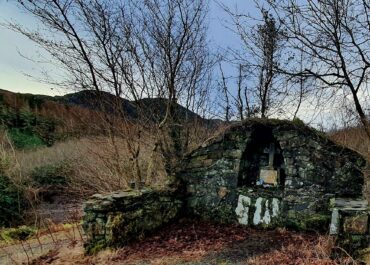Burial ground, Kildoney Glebe, Co. Donegal
In the townland of Kildoney Glebe, County Donegal, lies a poignant reminder of Ireland's past; a site known locally as a children's burial ground.
Burial ground, Kildoney Glebe, Co. Donegal
This complex archaeological feature consists of low earthen banks, ridges and hollows that create an undulating landscape across the site. At its heart sits a small mound topped with several modest standing stones, their weathered surfaces bearing silent witness to centuries of local tradition. Just north of this arrangement, a well completes the sacred geography of the place, its waters perhaps once thought to hold special properties.
Sites like this one at Kildoney Glebe are found scattered throughout Ireland, often in liminal spaces at the edges of communities. They typically served as burial places for unbaptised infants, stillborn children and sometimes adults who died by suicide or were otherwise excluded from consecrated ground according to historical Catholic doctrine. These cillíní, as they’re known in Irish, represent a complex intersection of religious belief, folk tradition and community memory that persisted well into the 20th century in some areas.
The archaeological record of this particular site was formally documented in the comprehensive Archaeological Survey of County Donegal, compiled by Brian Lacey and his team in 1983. Their survey captured field antiquities spanning from the Mesolithic period through to the 17th century, preserving crucial details about sites that might otherwise fade from memory. The standing stones and earthworks at Kildoney Glebe, whilst modest in scale, form part of Donegal’s rich tapestry of archaeological remains; each one telling a story of how communities dealt with grief, loss and the boundaries between the sacred and profane.


